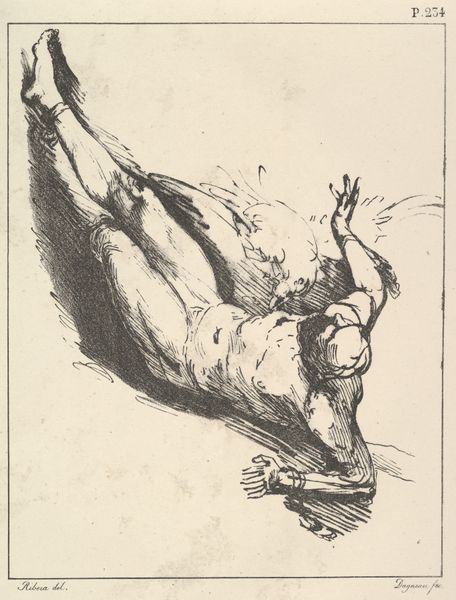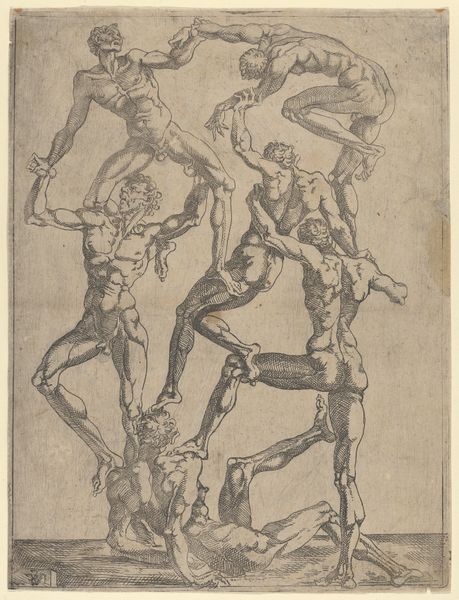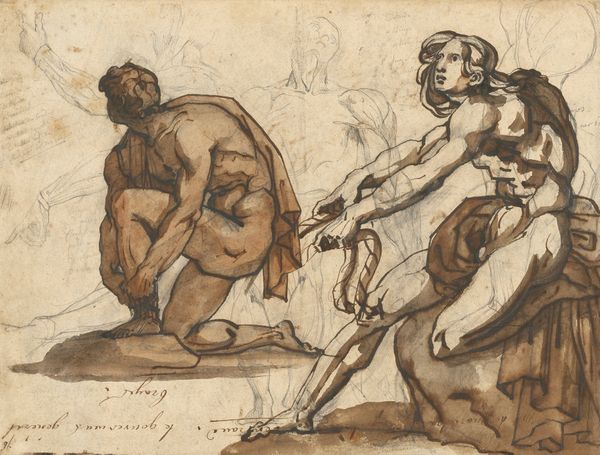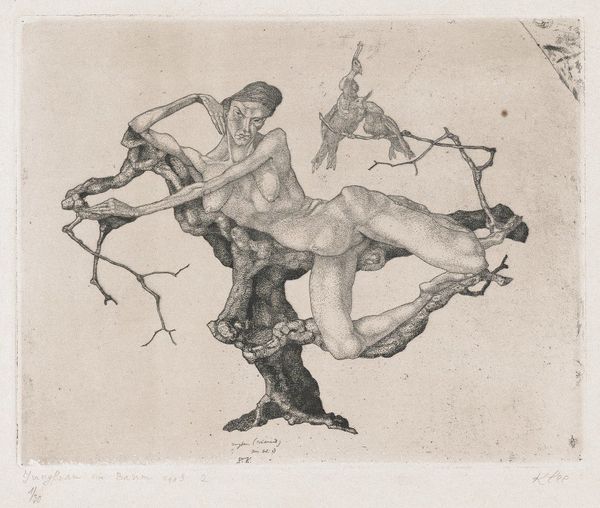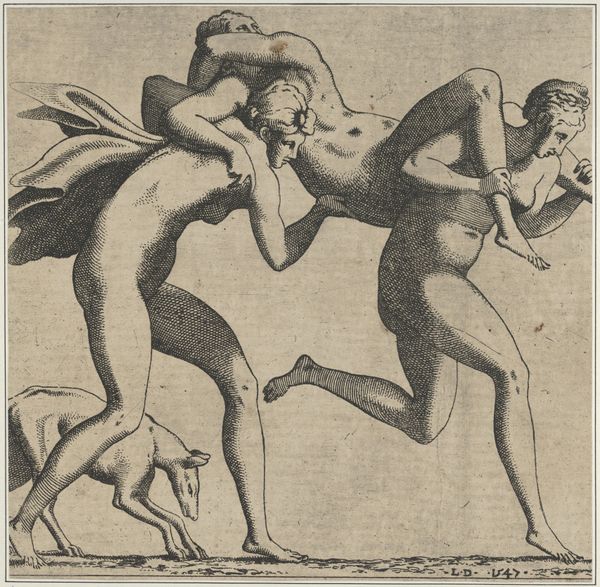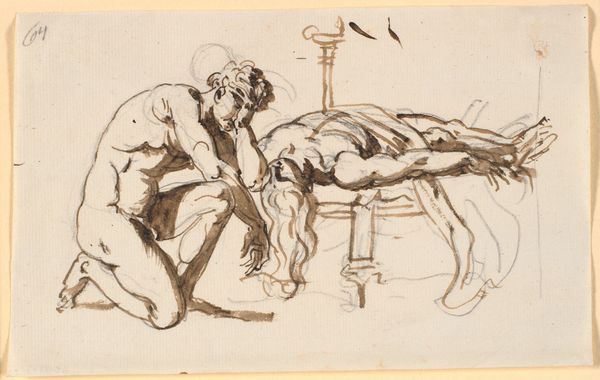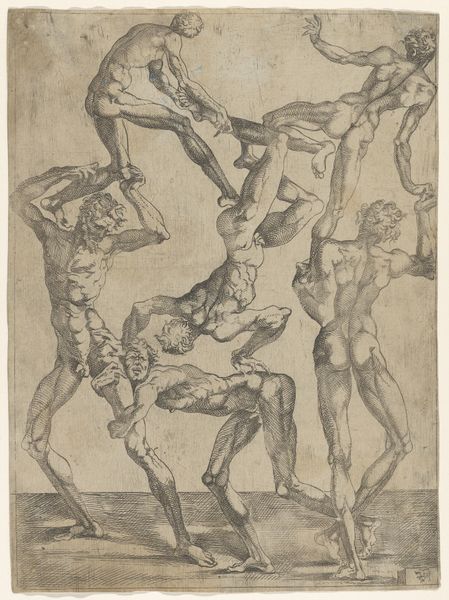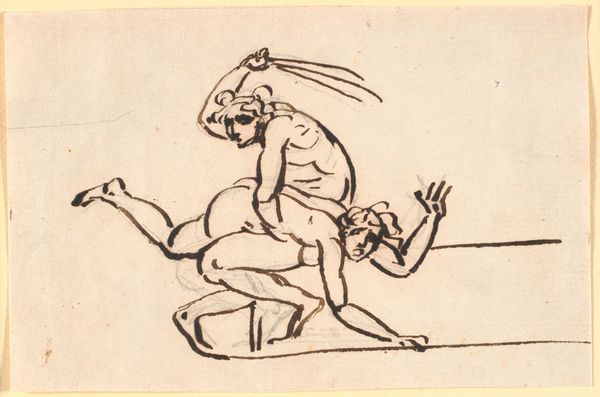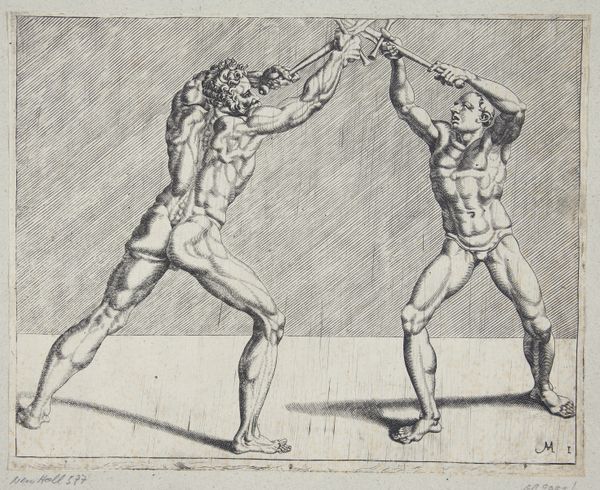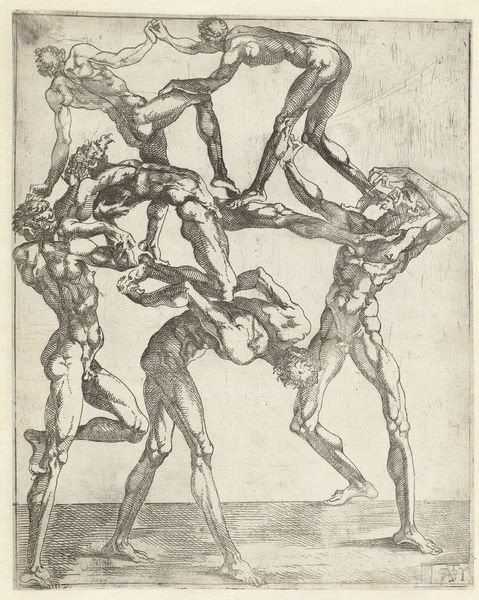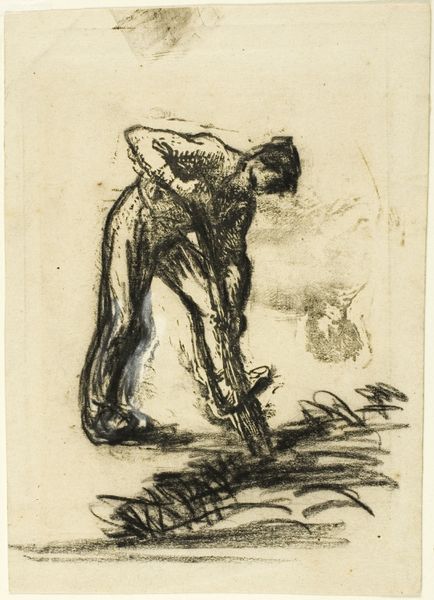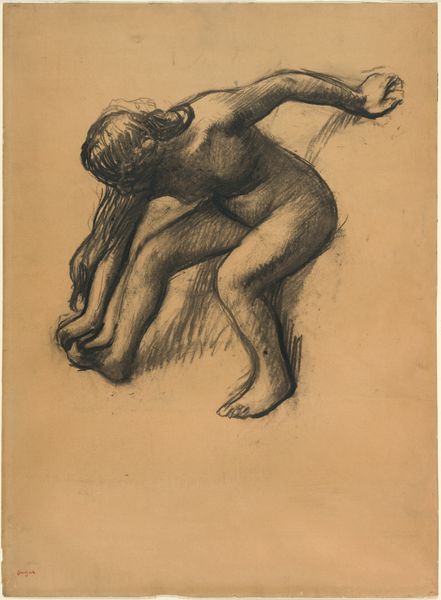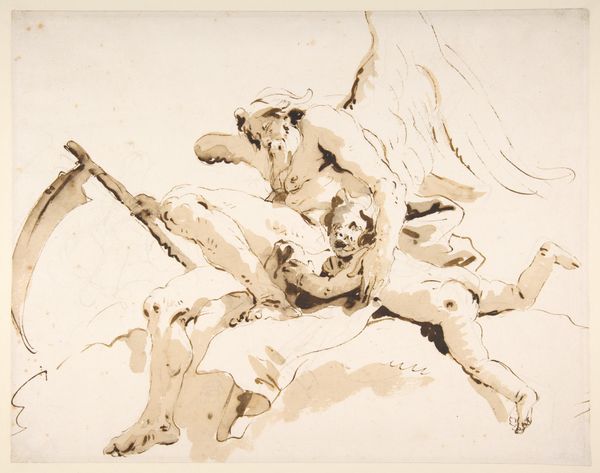
To nøgne mænd der slår vejrmøller, står på hovedet eller lignende 1743 - 1809
0:00
0:00
Dimensions: 136 mm (height) x 161 mm (width) (bladmaal)
Curator: We are looking at "Two Nude Men Hitting Windmills, Standing on Their Heads, or Similar," an ink drawing by Nicolai Abildgaard. It’s believed to have been created between 1743 and 1809. What's your initial response to it? Editor: It’s a flurry of activity, a dynamic interplay of figures captured with swift, assured strokes. The earth tones of the ink lend a sense of grounding, even as the figures defy gravity. There's a palpable sense of physical exertion; they seem caught mid-motion. Curator: Abildgaard’s mastery is evident in the dynamism conveyed through the economy of line. Note the composition. He uses line weight to describe not only the forms but also light and shadow. How does the artist draw attention to key narrative elements and establish the intended spatial relationships in this medium? Editor: Exactly. The limited palette underscores the sheer physicality of the act depicted. One has to imagine the artist at work: rapidly applying the ink to capture this scene in life and conveying the labor it took to create art while celebrating other forms of work through the figures, though what their labor entails precisely is hard to decipher. It raises an interesting question about what it meant to represent such "low" physical exertion at the time. Curator: One might consider how the figures interact with the surrounding space—they appear suspended and ungrounded. I am drawn to the interplay between the positive space defined by the bodies and the surrounding negative space and how it creates tension. We have figures whose actions, to quote the artwork title, defy any conventional, intelligible goal. Is that defiance meaningful? Editor: Perhaps this lack of an identifiable purpose makes a commentary. In emphasizing physical movement and effort, is Abildgaard challenging conventional representations of labor? How much art and life share the common necessity to simply sustain themselves by means that, to outside observation, seem quite odd? Curator: It’s this capacity of drawing to articulate complexity with such minimal means that compels. Abildgaard truly explores the medium. Editor: The materiality here suggests much broader connections with the everyday manual work that most artistic representation has historically sought to exclude. A subtle inversion and subversion, indeed.
Comments
No comments
Be the first to comment and join the conversation on the ultimate creative platform.
